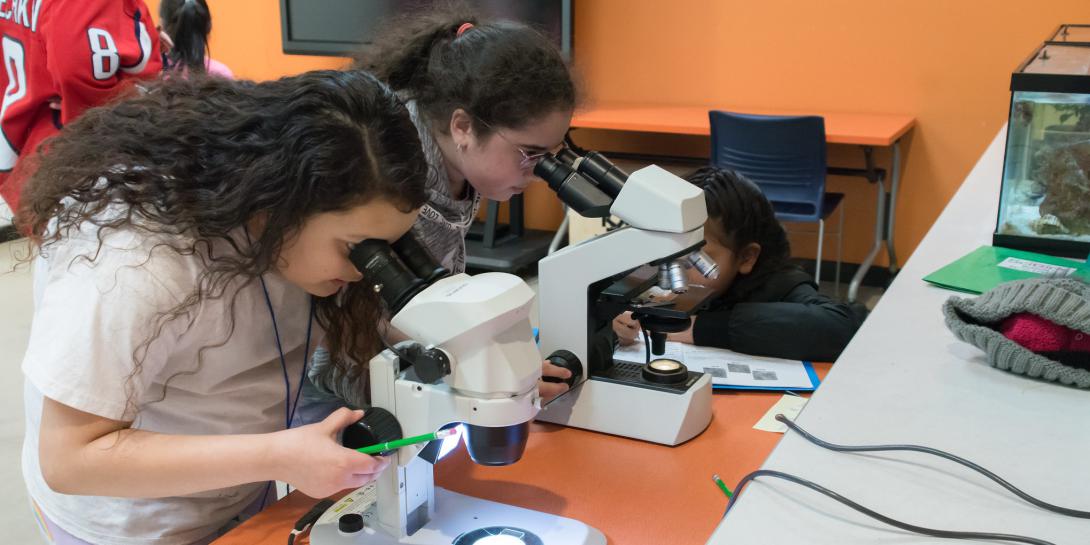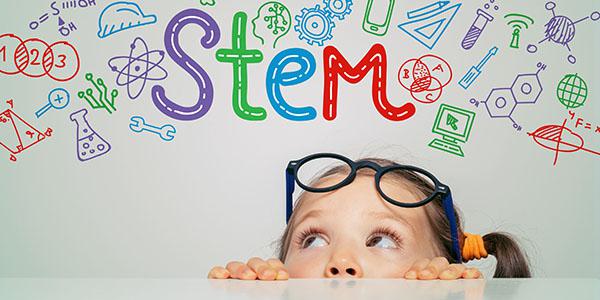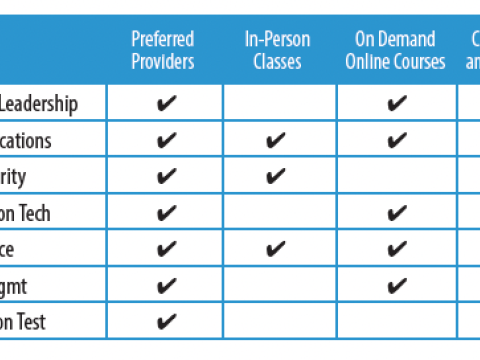Representation and the Freedom to Fail are Critical to Girls' Success in STEM
Laahiri Chalasani’s passion for STEM didn’t really begin until college. Now, as senior manager of Lab Experience at the Children’s Science Center in Fair Oaks Mall in Fairfax, Virginia, and co-founder of the Latina SciGirls program in Northern Virginia, she lives and breathes it. And, she wants to make sure it doesn’t take young girls until college to build their STEM confidence.
Chalasani, who will be a panelist on the Educating Girls and Women in STEM Panel during AFCEA’s Women in the Workforce: A Journey in STEM virtual event September 2, originally went to school to pursue biology to become a science teacher but didn't feel suited for it. She then focused on elementary education and realized she can empower the younger generations to pursue STEM instead.
“Now as a professional, I’ve had time to reflect on why I didn’t feel like I was a good fit [for biology],” Chalasani says. “If I had had the guiding voices of people in the field, I think that would have been beneficial,” she adds.
That’s where her work at the Children’s Science Center comes in. “We hope to give those guiding voices to younger children to pursue STEM degrees,” says Chalasani.
The Children’s Science Center is a nonprofit organization that also includes a physical museum called the Lab in Northern Virginia. It’s designed for families of any kind to come and explore. “It’s really about self exploration and learning, there’s no quizzes or tests,” says Chalasani.
The success of the Lab comes from the informal education aspect. “It’s set up for people to just make messes, have fun, make mistakes, and learn from that,” Chalasani explains.
“I think a lot of times in school it’s a little harder to do that because they have set goals that they are trying to achieve,” she adds. The idea is to be able to come in and do a project and be like “that totally didn’t work” and then address why that didn’t work and feel ok about failing, she says.
Another program especially near and dear to Chalasani is Latina SciGirls. Created for young Latinas in grades 3-5 in partnership with area schools, the purpose of the program is to grow girls’ confidence and curiosity about STEM.
“We introduce them to celebrity scientists, so women in the field, specifically Latinas in the field,” says Chalasani. Past speakers include an optical engineer at NASA, an FBI detective and a USDA employee who works with plants.
“Not only are these celebrity scientists coming in to do the science along with [the girls] and showcase their job, but the goal is for these women to talk about what was hard about doing it or what was easy about getting to this point, how did your family react to it, how did your community react to it, what are things that you utilized in your community, what did you see that was lacking?” explains Chalasani.
It’s important for the girls to understand that these careers are reachable but also the steps it takes to get there, she adds.
For Chalasani personally, a huge step in her career was her “aha moment.” Out of college she began working at the Children’s Science Center part-time and was soon promoted to a coordinator position. She attended a nationwide American Alliance of Museums Conference. She remembers sitting in the audience during one of the keynotes and someone was given an award for their exemplary service to the field as a science educator. When Chalasani looked up to see the winner, it was an Indian woman.
“She walked across the stage and in that moment something changed. As an Indian American woman I realized that I could do it as well,” she exclaims. “Representation matters. Seeing yourself in the people you work around and are working towards [becoming] is critical for young women,” Chalasani adds.
Eventually this woman would become Chalasani’s mentor. They connect regularly to talk about career goals and STEM ideas.
The future of STEM looks bright for Chalasani and others. “I think the coolest thing is there’s this big uptick in STEM conversations, including in schools. And sometimes it’s interesting to think about: STEM has always been around us, in every single thing that we do. There’s so many jobs that we don’t even realize are STEM-related,” she says.
“Making STEM the norm for everything and not this special commodity that it is right now will hopefully translate to jobs being more accessible and attainable for people of all kind. That’s the biggest thing: it hasn’t been accessible for everyone. I think women play such a huge role in that,” Chalasani explains.
Everyone has a role to play in building the women STEM workforce, including men. “One of the biggest things is first just acknowledging that there is a gap in the workforce,” says Chalasani. “Because sometimes I think we look at the solutions without realizing there is a community that needs to acknowledge it first in order for us to bridge that gap,” she adds.
“Engaging in conversations even though it doesn’t directly impact you I think is important,” says Chalasani. The hope is that more men will have these conversations with superiors who may be overlooking the work of women.
It also means making sure that setting up STEM-related panels at conferences and events is reflective of the true community, not the community it’s perceived to be, Chalasani adds.






Comments